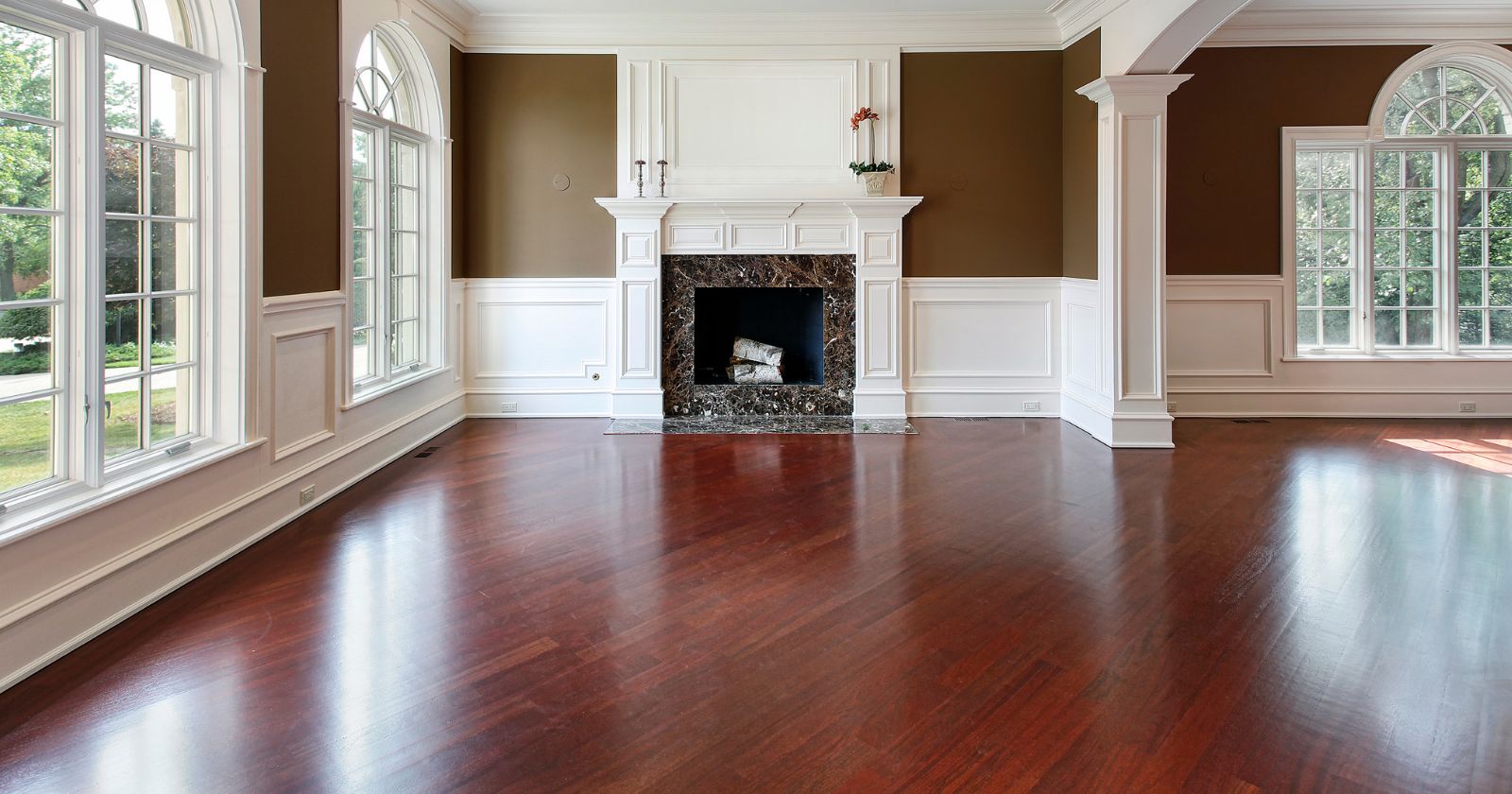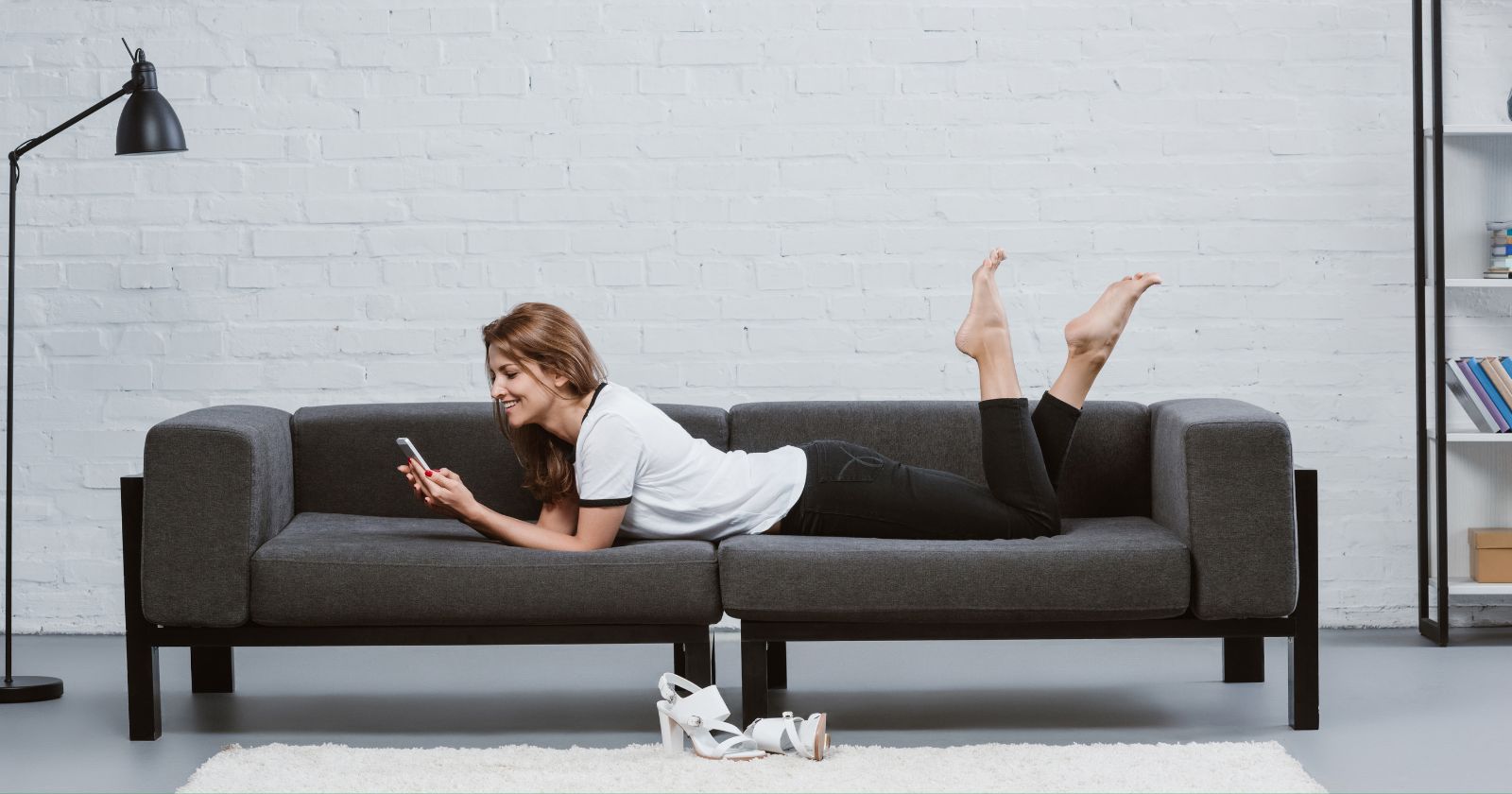One of the biggest mistakes you can make after refinishing your hardwood floors is to put your furniture and area rugs back in place before the new finish has been given time to penetrate, harden, and completely cure. This is something a lot of homeowners are unaware of, but it’s a problem that can completely spoil your refinishing project.
The time you wait before putting furniture back on refinished hardwood floors depends upon the type of finish you are using. You should wait at least two days for a water-based polyurethane and four days for oil polyurethane. Other finishes may have different times – always check with your flooring professional or the label if you are going the DIY route.
Below we dig little bit deeper into what you need to know about the timing of getting your furniture back into place on floors that you have just had refinished.
p.s. Need some new furniture to go with your refinished floors? Check out our sustainable furniture guide for some ideas.
When to Put Furniture Back After Water-Based Polyurethane
Water-based poly is going to set up much faster than oil-based poly, but you’re still going to want to give your floors plenty of time to harden and cure before you start to stick furniture on top of it.
After finishing your hardwood flooring with water-based polyurethane you should wait 2 to 4 hours before walking on them (ideally longer) and you should not move furniture back for at least two days, (72 hours would be better). The longer you can wait the better and stronger your finish is likely to be and the less chance of damage occurring.
It is also a good idea to keep dogs and other pets (or little kids) off of these floors for a week or so: the last thing you want to do is scratch up your brand-new finish!
When to Put Furniture Back After Oil-Based Polyurethane
Oil based poly floors are going to need a little bit more time to fully dry and cure compared to the water-based options, usually about double the length of time if you really want a good, solid finish.
After finishing your hardwood flooring with oil-based polyurethane you should wait 3 to 4 days before you can walk on the floors (and you should not move furniture back for at least four or five days, The longer you can wait the better and stronger your finish is likely to be and the less chance of damage occurring.
The more drying time you give the floors, the better. This is especially important with oil-based poly as it needs a lot more time to set up and solidify.
There are ways to speed up the hardening process (using fans and heat lamps), but we do not recommend this. There is an not insignificant chance that you could ruin the floor’s finish. It doesn’t take a lot to make a wood floor refinishing job go sideways if you try to rush the drying and curing process. If the finish is ruined, the floor will need to be completely stripped back and the process started all over again.
When to Put Furniture Back After Other Finishes
If you’ve decided to go in a different direction to refinish your floors (maybe a more natural stain and hardwax oil solution, for example) then your “delay times” are going to be a little bit different. We can’t list every different finish here, so our best advice is to check the label of the finish you are using and/or consult your local flooring professional.
You’ll need to think about things like the traffic areas on these floor surfaces (areas with a lot of regular foot traffic need more time to dry and harden compared to those that don’t see that much), the durability and resiliency of the floor sealant you’ve chosen, and a handful of other details that have a huge influence on this timeline.
As a general rule, though, you want to stay off of all hardwood floors that have been refinished in your house for at least 48 hours – and ideally twice as long if you have the opportunity to do so. Of course, keeping people and pets off of these floors is always going to be a bit of a challenge. We recommend you put up signage after the final coat has gone down to remind people.
Further Protection For Your Refinished Hardwood Floor
Your polyurethane finish should protect your floor from everyday wear and tear. However, if you’re someone who likes to be especially careful, you could also invest in floor protectors for your furniture. Floor protectors, like these felt furniture pads (amazon) and these transparent protector caps (amazon), provide further protection from scratches or scrapes that can happen as you move your furniture across the floor.
What’s Difference Between The Cure Time and Dry Time?
There’s a big difference between the cure time and the overall dry time (or hardening time) of floor finishes, it is important that you understand this difference completely before you even think about dragging things onto your new floors.
The cure time for hardwood is the length of time it takes for every single solvent to evaporate from the finish completely, stabilizing the finish in place permanently. The dry time is the length of time it takes for surface solvents and liquids to evaporate (but no the deeper layers). The dry time is typically significantly shorter than the cure time.
The cure time for refinished hardwood floors when you’re using water-based finishes, for example, is anywhere between seven days and 14 days – and sometimes even longer than that (depending on things like temperature and humidity).
Oil poly can take 30 days or longer to fully cure, which is considerably longer than the time it takes to dry and harden to the point where you can bring your stuff out on to the wood floors themselves.
On the flip side of things, it might only take a water poly four to eight hours to be considered “dry”, and oil poly to “dry” in 12 to 24 hours.
How Long Does Sanding a Hardwood Floor Take?
You can expect the process to take at least one or two days per room with a hardwood floor. It may take longer if you have larger than average rooms, or if your wood floors are very hard.
How Long Does It Take to Refinish Hardwood Floors?
From start to finish, you should expect it to take between three to five days to refinish hardwood floors in a room. This does not include drying time, which could add up to five days to the project.
When Can You Put Rugs on Refinished Hardwood Floors?
Rugs and area rugs can only be put on refinished hardwood floors once the finishing agents have completely dried (otherwise the rugs will absorb solves that belong in the floor). Expect to wait 3-5 days oil-based finishes, a little less for water-based.
How Soon After Refinishing Can I Walk On My Hardwood Floor?
You should wait at least 2-4 hours before walking on a floor refinished with a water-based poly finish, and as much as 3 to 4 days before walking on a floor refinished with an oil-based poly finish.




